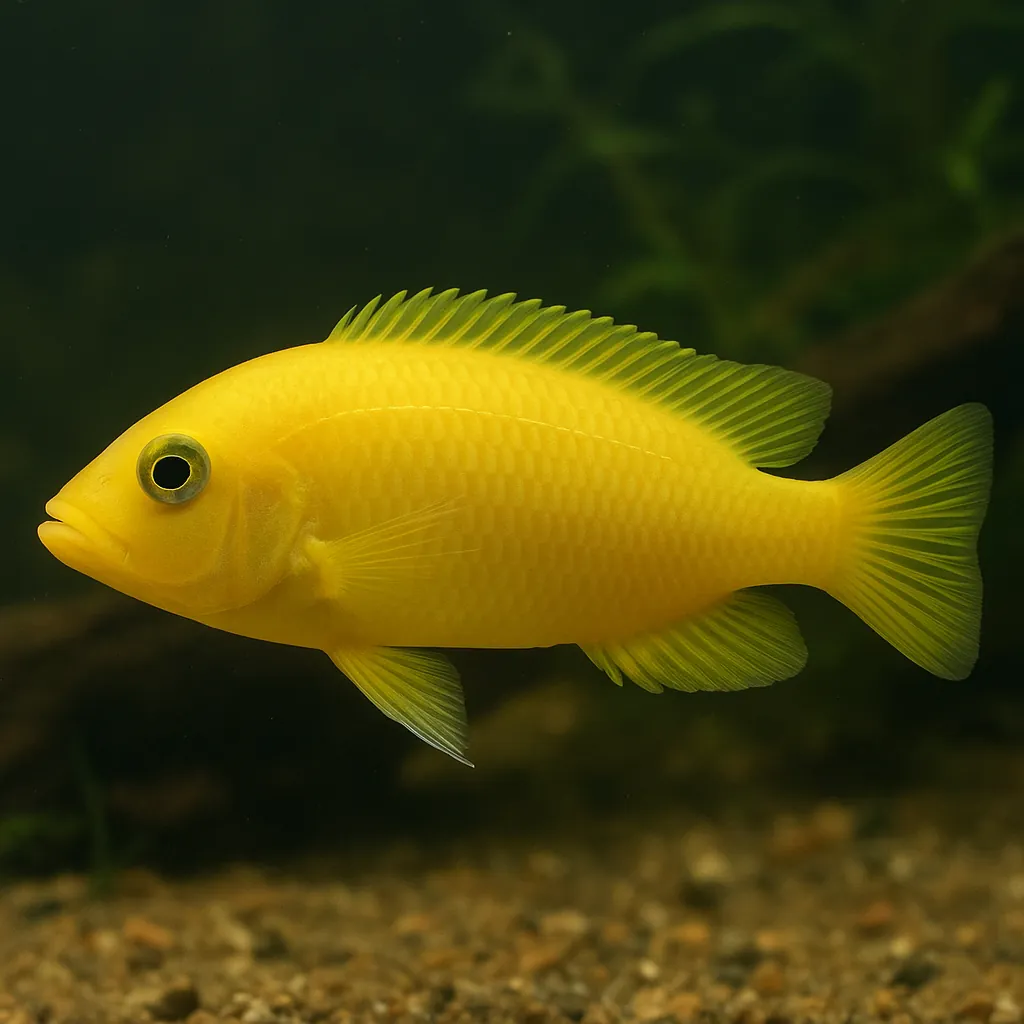
Lemon cichlid
Introduction
The Lemon Cichlid (Neolamprologus leleupi) is a vibrant freshwater fish native to Lake Tanganyika in East Africa. Renowned for its striking yellow coloration, this species adds a splash of brightness to any aquarium. Its manageable size and engaging behavior make it a popular choice among aquarists. While not overly demanding, the Lemon Cichlid does require specific care to thrive, making it suitable for hobbyists with some experience in fishkeeping.
Care and Environment
Providing optimal care for the Lemon Cichlid involves replicating its natural habitat and maintaining stable water conditions.
What is the minimum tank size for a Lemon Cichlid?
A minimum tank size of 70 liters is recommended for a single pair of Lemon Cichlids. For groups or community setups, a larger tank of at least 200 liters is ideal to accommodate their territorial nature and provide ample space for swimming and establishing territories.
What are the ideal water parameters for Lemon Cichlids?
Maintaining water conditions that mimic Lake Tanganyika is crucial. Aim for a temperature range of 24–27°C, a pH between 7.5 and 9.0, and water hardness of 8–25 dGH. Regular water changes and efficient filtration are essential to keep the environment stable and free from harmful toxins.
How should I set up the tank for Lemon Cichlids?
Use a sandy substrate to replicate their natural environment. Incorporate plenty of rocks and caves to provide hiding spots and territories, as these fish are cave dwellers. Ensure open swimming areas are available. Hardy plants can be added, but they should be securely anchored to prevent uprooting.
What should I feed my Lemon Cichlid?
Lemon Cichlids are omnivorous. Offer a varied diet that includes high-quality cichlid pellets or flakes, supplemented with live or frozen foods like brine shrimp, bloodworms, and daphnia. Including vegetable matter, such as spirulina flakes, can enhance their coloration and overall health.
Are there any specific challenges in keeping Lemon Cichlids?
While generally hardy, Lemon Cichlids can be territorial, especially during breeding. Providing sufficient hiding spots and monitoring tank dynamics can help manage aggression. They are also sensitive to poor water quality, so consistent maintenance is vital.
Origin and Habitat
The Lemon Cichlid is endemic to Lake Tanganyika, the world's second-largest freshwater lake, located in East Africa. Within the lake, they inhabit rocky shorelines, dwelling among crevices and caves. These environments offer protection from predators and serve as breeding sites. The lake's alkaline waters, with a pH ranging from 7.5 to 9.0, and temperatures between 24–27°C, provide the ideal conditions for this species.
Where is the Lemon Cichlid naturally found?
This species is found exclusively in Lake Tanganyika, primarily in the southern regions of the lake.
What type of environment do Lemon Cichlids prefer?
They favor rocky habitats along the lake's shoreline, utilizing cracks and crevices for shelter and breeding.
Temperament and Compatibility
Lemon Cichlids exhibit a moderately aggressive and territorial nature, particularly during breeding periods. They can coexist with other Tanganyikan cichlids of similar size and temperament, provided the tank is spacious and well-structured.
Are Lemon Cichlids suitable for community tanks?
They can be kept in community tanks with other peaceful Tanganyikan cichlids, such as Julidochromis or Altolamprologus species. However, avoid housing them with overly aggressive or significantly larger fish.
How can I minimize aggression among Lemon Cichlids?
Providing ample hiding spots and clearly defined territories can help reduce aggression. Ensuring the tank is large enough to accommodate multiple territories is also beneficial.
Interesting Facts
The Lemon Cichlid is not only admired for its vivid coloration but also for its unique behaviors and adaptability.
Did you know that Lemon Cichlids are cave spawners?
They prefer to lay their eggs on the ceilings or walls of caves, with both parents actively guarding the eggs and fry.
Are there different color variations of Lemon Cichlids?
Yes, while the bright yellow variant is most common, color variations ranging from deep brown to orange exist, often influenced by their specific locale within Lake Tanganyika.
How long do Lemon Cichlids typically live?
With proper care, they can live up to 8–10 years in captivity, making them a long-term commitment for aquarists.
Sources
All information in this article has been gathered from the following reputable sources:
Overview
Recommended Tank Size 52.8 Gallons (for groups of 5 or more) |
Minimum Group Size 1 |
Minimum Tank Volume 18.5 Gallons |
Maximum Adult Length 3.9 inches |
Average Adult Length 3.9 inches |
Shoaling (6+ required) No |
Preferred Water Type Hard, alkaline freshwater |
Temperature Range (°C) 24–27 |
pH Range 7.5–9.0 |
Water Hardness (dGH) 8–25 |
Typical Lifespan (years) 8 years |